
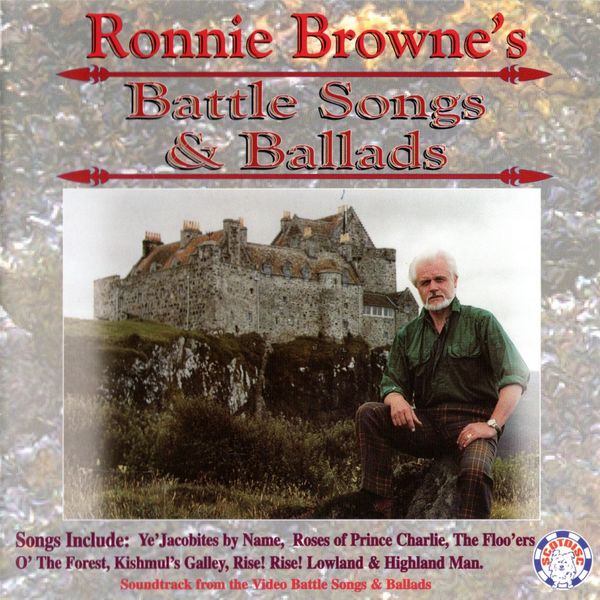 |
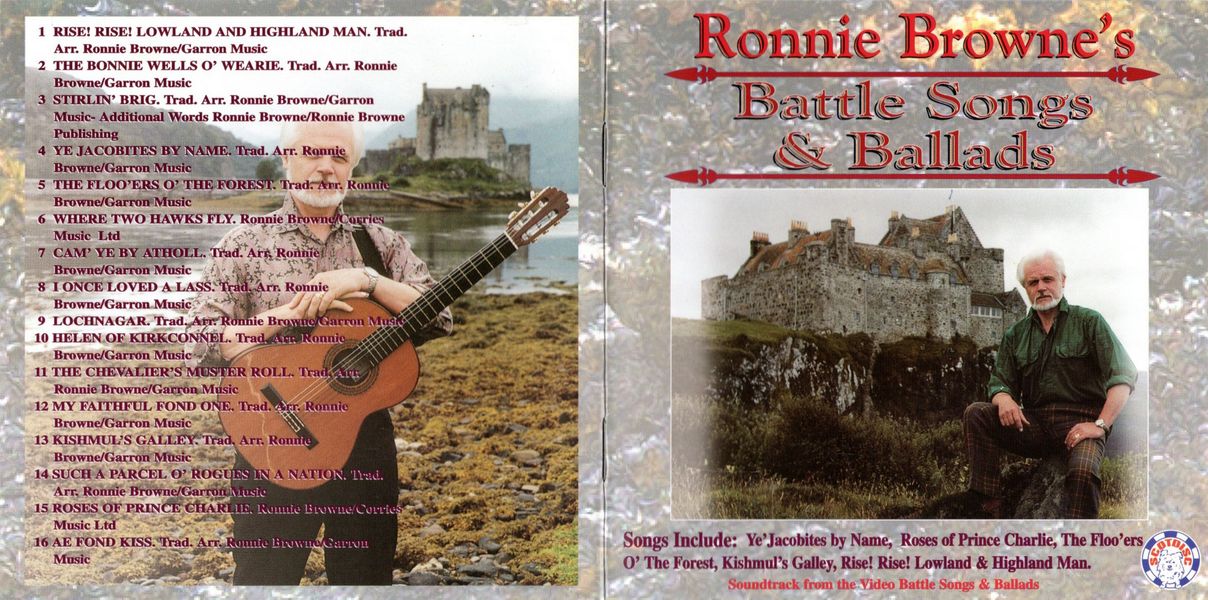
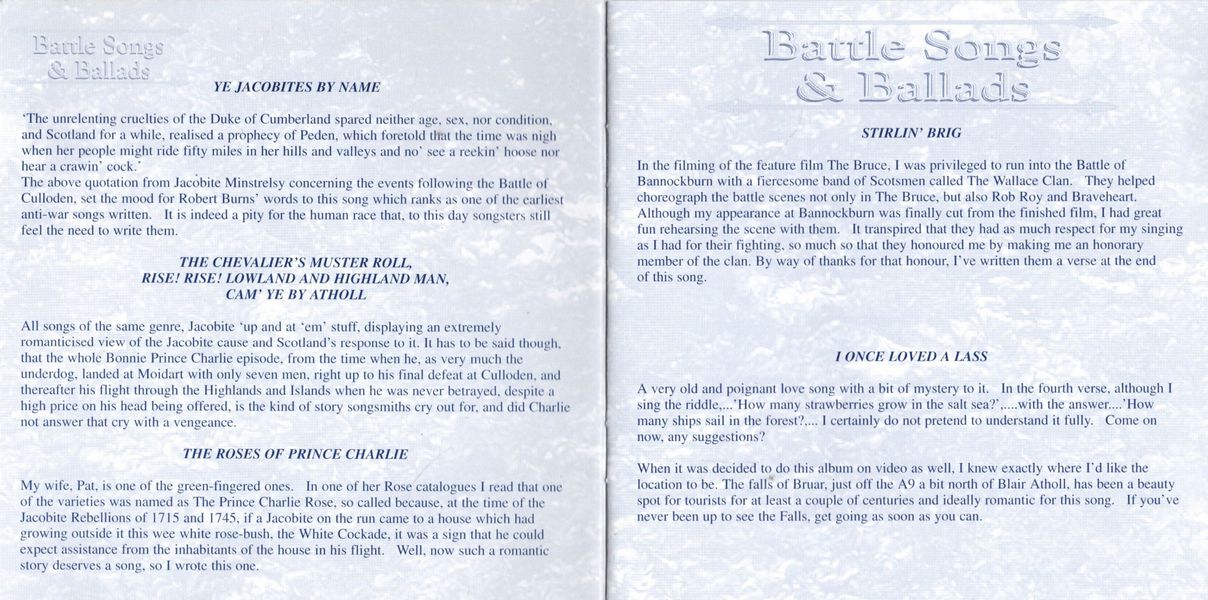
|
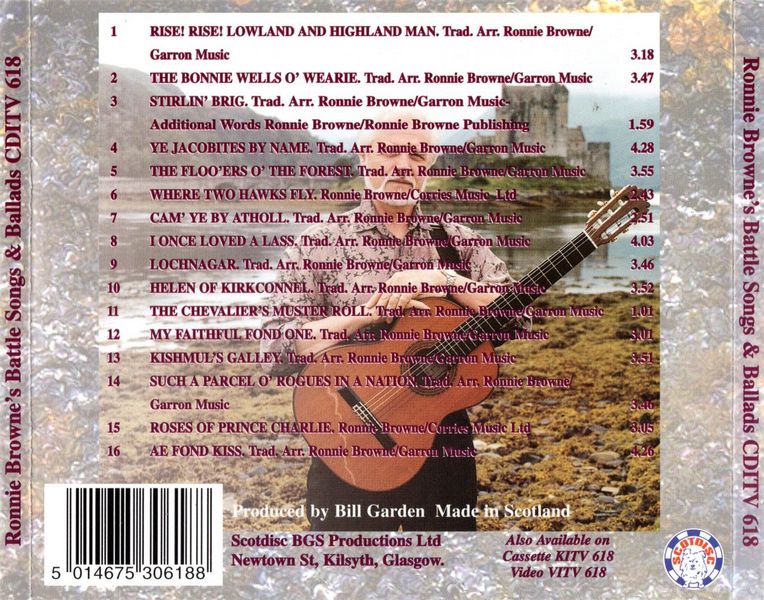
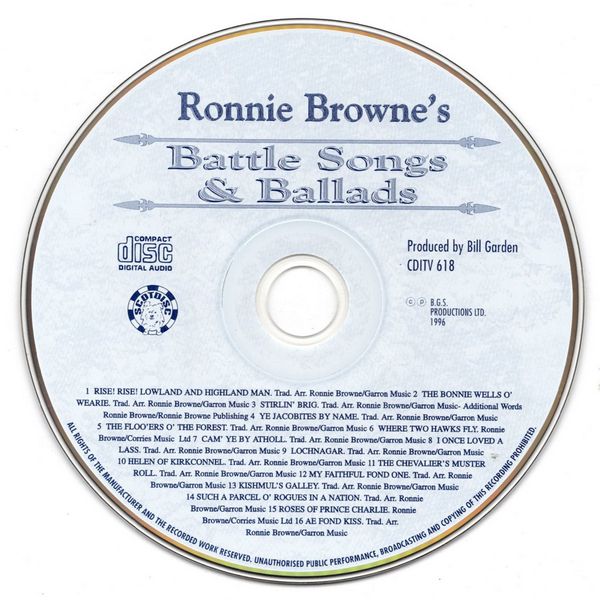
|
| more images |
Sleeve Notes
Ye Jacobites By Name — 'The unrelenting cruelties of the Duke of Cumberland spared neither age. sex, nor condition, and Scotland for a while, realised a prophecy of Peden, which foretold that the time was nigh when her people might ride fifty miles in her hills and valleys and no' see a reekin' hoose nor hear a crawin' cock.'
The above quotation from Jacobite Minstrelsy concerning the events following the Battle of Culloden, set the mood for Robert Burns' words to this song which ranks as one of the earliest anti-war songs written. It is indeed a pity for the human race that, to this day songsters still feel the need to write them.
The Chevalier's Muster Roll, Rise! Rise! Lowland and Highland Man & Cam' Ye By Atholl — All songs of the same genre, Jacobite 'up and at 'em' stuff, displaying an extremely romanticised view of the Jacobite cause and Scotland's response to it. It has to be said though, that the whole Bonnie Prince Charlie episode, from the time when he, as very much the underdog, landed at Moidart with only seven men, right up to his final defeat at Culloden. and thereafter his flight through the Highlands and Islands when he was never betrayed, despite a high price on his head being offered, is the kind of story songsmiths cry out for. and did Charlie not answer that cry with a vengeance.
The Roses Of Prince Charlie — My wife. Pat, is one of the green-fingered ones. In one of her Rose catalogues I read that one of the varieties was named as The Prince Charlie Rose, so called because, at the time of the Jacobite Rebellions of 1715 and 1745. if a Jacobite on the run came to a house which had growing outside it this wee white rose-bush, the White Cockade, it was a sign that he could expect assistance from the inhabitants of the house in his flight. Well, now such a romantic story deserves a song, so I wrote this one.
Stirlin' Brig — In the filming of the feature film The Bruce, I was privileged to run into the Battle of Bannockburn with a fiercesome band of Scotsmen called The Wallace Clan. They helped choreograph the battle scenes not only in The Bruce, but also Rob Roy and Braveheart. Although my appearance at Bannockburn was finally cut from the finished film, I had great fun rehearsing the scene with them. It transpired that they had as much respect for my singing as I had for their fighting, so much so that they honoured me by making me an honorary member of the clan. By way of thanks for that honour. I've written them a verse at the end of this song.
I Once Loved A Iass — A very old and poignant love song with a bit of mystery to it. In the fourth verse, although I sing the riddle, … 'How many strawberries grow in the salt sea?', … with the answer … 'How many ships sail in the forest?, … I certainly do not pretend to understand it fully. Come on now, any suggestions?
When it was decided to do this album on video as well, I knew exactly where I'd like the location to be. The falls of Bruar, just off the A9 a bit north of Blair Atholl, has been a beauty spot for tourists for at least a couple of centuries and ideally romantic for this song. If you've never been up to see the Falls, get going as soon as you can.
The Floo'ers O' The Forest — In the year 1513, 80 Selkirk Souters left the border town of Selkirk to join their King at The Battle of Flodden. Only one returned alive. He carried with him a captured English standard. He told of the carnage of the battle and in anger twirled the flag round his head and cast it to the ground at his feet. This act of defiance and the memory of those who fell in the battle, is commemorated to this day in the ceremony of Casting the Colours at the annual Selkirk Common Riding celebrations.
History books will tell you how many Commoners fell together with the flower of Scottish Nobility at the Battle of Flodden. Both High and Low are remembered as The Floo'ers O' The Forest.
The Bonnie Wells O' Wearie — The Wells O' Wearie used to stand on a spot just beside Duddingston Loch and in the shadow of Samson's Ribs in the King's Park, Edinburgh. When a railway line was built to connect Portobello with Edinburgh, the Wells were removed to make way for a railway tunnel. Now. even the railway has gone, leaving the tunnel as a public footpath leading to The Mailings at St. Leonards. The King's Park was my playground as a small boy, and every time I sing this song, I see myself climbing up Arthur's Seat to the Lion's Head, clambering up and down Salisbury Crags, and running along The Radical Road at the bottom of the Crags to the Palace of Holyrood House, shouting all the way … 'Round and round the Radical Road the Radical Rascal ran! … How many R's in THAT?'
My God. that wisnae yesterday!
Where Two Hawks Fly — In the year 1902, when the Anderson family moved into the farmhouse of East Buccleuch in the Ettrick Valley, a new fireplace was to be built in the kitchen. On lifting the floorboards to carry out this work, the mouth of a tunnel was discovered in the foundations. A bit of research reveald that the farmhouse had been built on the site of the 15th century fortress of the Scotts of Buccleuch and the tunnel had been used as a means of escape into the surrounding hills in the event of attack. Although the tunnel-mouth was in-filled, it would appear that the rest of it is still intact, because when I was resident in West Buccleuch, some 150 yards across the Rankle Burn from East Buccleuch, I could often hear my neighbour's kitchen door closing, … but the noise came from beneath my kitchen floor!
The only other thing that remains of the old fortress is a crescent moon on a block of stone set into the wall above the door of the farmhouse, this being part of the crest of the Buccleuch family.
When I heard about the old fortress the romantic in me had visions of a once-thriving community there in the hills where now only the bleating of sheep can be heard. I thought the story deserved a wee song.
Helen Of Kirkconnel — When I was preparing the songs for this album a good friend of mine in Portobello said that she'd love to hear a song which she last heard at school. I won't mention how many years ago! As coincidence would have it Helen of Kirkconnel was the song and I had already planned to do it. It's nice to know that I've made at least one person happy by its inclusion.
Mistakenly I thought that the site of Helen's unmarked grave was in Kirkconnel churchyard. Mr Shaw, the Session Clerk at Kirkconnel Parish Church, tells me that I'm not the only one to make that mistake since he's constantly receiving calls from other people regarding the song. Evidently there is a Kirkconnel Lea in another part of Dumfries-shire which seems to be the more likely resting place of the lady.
Lochnagar — I am not a student of English literature, nor of poetry, nor of Lord Byron, and therefore I don't know if he ever came to Scotland during his life, either as a youngster or otherwise, but I'll tell you this, in this song he certainly gives the impression that he knows the country well and even hints that he would maybe have liked to have been a Scot himself. Perhaps he's just displaying his talent of believable story-telling.
What does seem true to me though, is that, when this song was first published, he'd let himself in for a bit of stick when he entered his local pub to find his English cronies reading, … 'England thy beauties are tame and domestic …'. Brave man George. Thanks for the song anyway.
Ae Fond Kiss — If anybody had enough experience of fond goodbye kisses to write such a song, it surely must have been Robert Bums.
Funnily enough I'm reminded of the work of the modem group Abba, who also seemed to make a career out of imparting to us in their songs their own tangled romantic problems. Speaking as an old married man, … tae the same woman folks, … of some 37 years, I certainly don't envy either Burns or Abba. I just couldnae stand the heartache.
Kishmul's Galley — When I was a boy I used to search the shelves in the Central Library in Edinburgh for tales of the ancient heroes. Later in life when I had gotten into the singing and I had heard this song for the first time, all the stories I had read came back to mind. I could see clearly the flashing, dipping oars, the billowing sails, the shields lining the boat and the bristling spears held in readiness. In effect what I was actually seeing was a film called The Vikings, with Kirk Douglas and Tony Curtis. Wasn't it great.
Ach well, maybe it's just as well that some of us never grow up.
Such A Parcel Of Rogues In A Nation — Robert Burns here reflects the feelings of the majority of the people of Scotland who, on January 16th 1707, when the Treaty of Union between Scotland and England was made law, felt that their country had been sold down the river for the vested interests of the money men. It is no coincidence that we filmed the song for the video against the backdrop of Floors Castle, built for John Kerr, 5th Earl of Roxburgh, who as Secretary of State for Scotland in 1707, was granted a Dukedom in reward for his assistance in easing the passage of the Act through the Scottish Parliament of the time.
My Faithful Fond One — In this song from the Western Isles of Scotland there is no indication where the pining singer is located. For the video we chose a site equally romantic in Scottish and Classical music … Fingal's Cave, on the island of Staffa. Choosing such a location of course leaves you at the mercy of weather, time and tide. Thankfully the weather was good and the timing excellent, because we arrived by helicopter just as the last boat load of sightseers were leaving for the day. We nearly came unstuck with the incoming tide however, because just as we reached the end of the song the waves were lapping at the director's feet, threatening to sweep him and the camera crew into the inmost recesses of the Cave. If you detect a slight speeding up of the song towards the end you'll understand why.